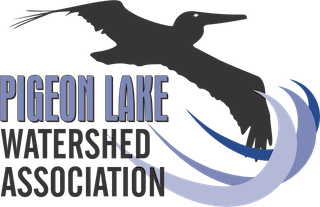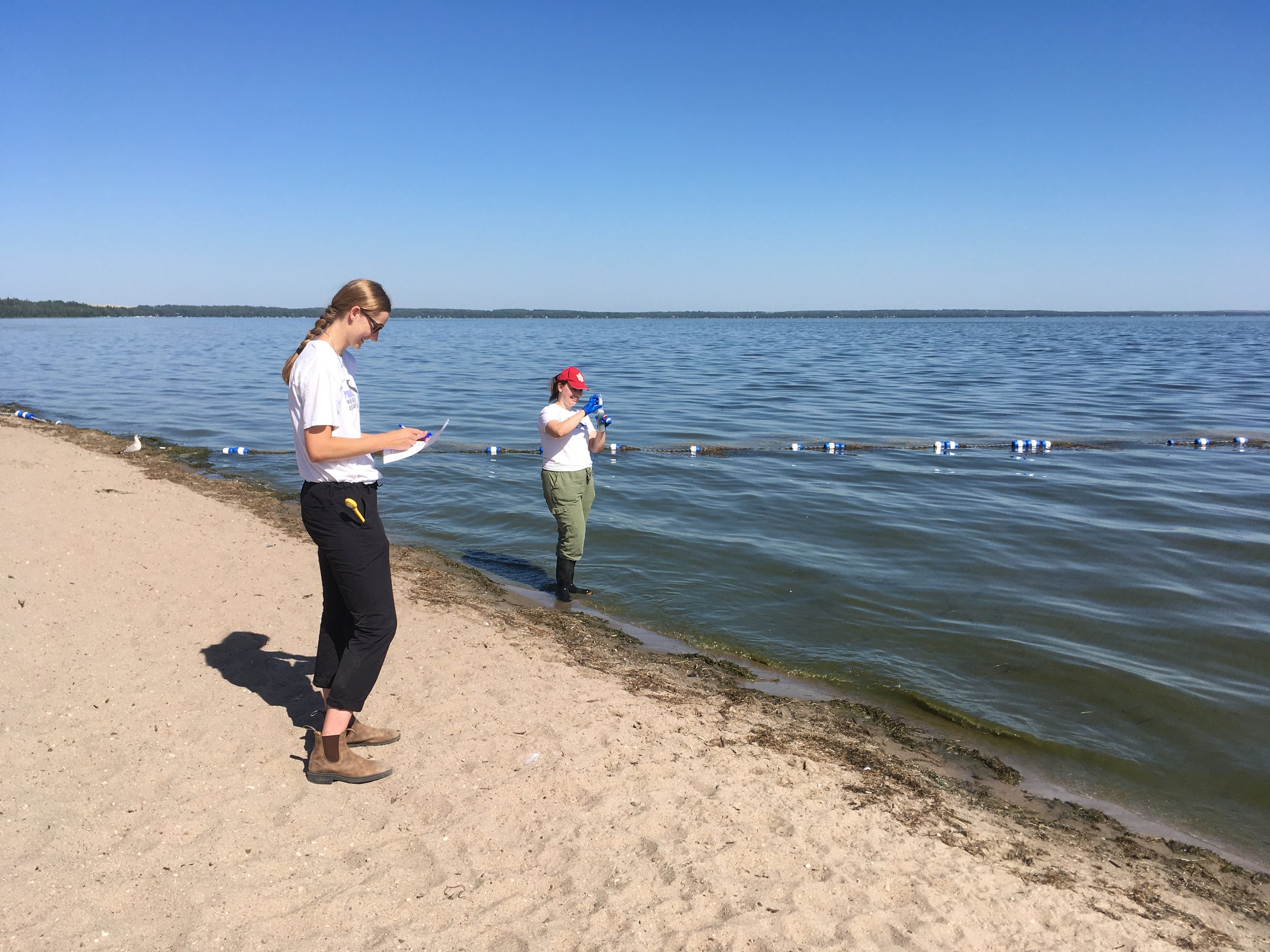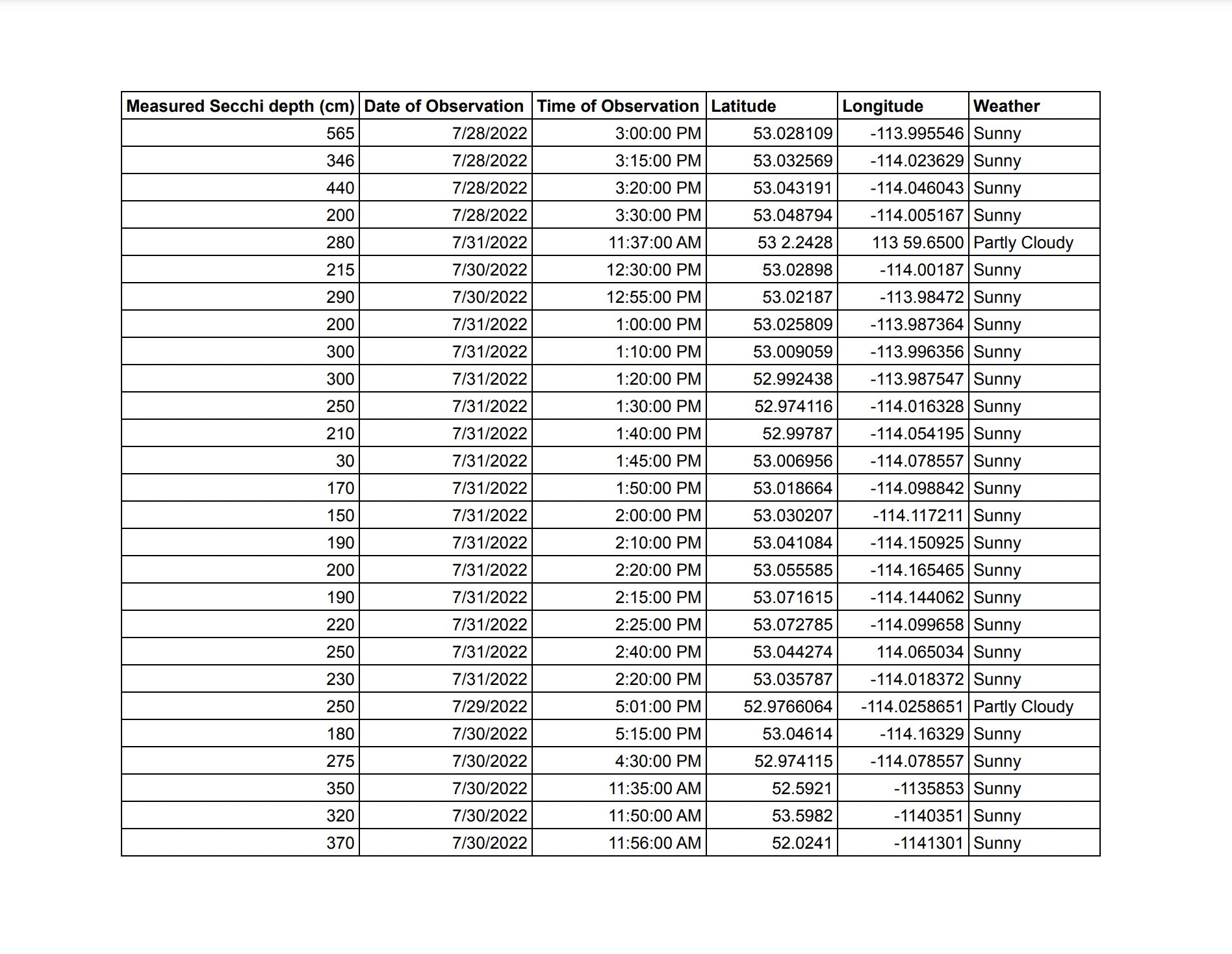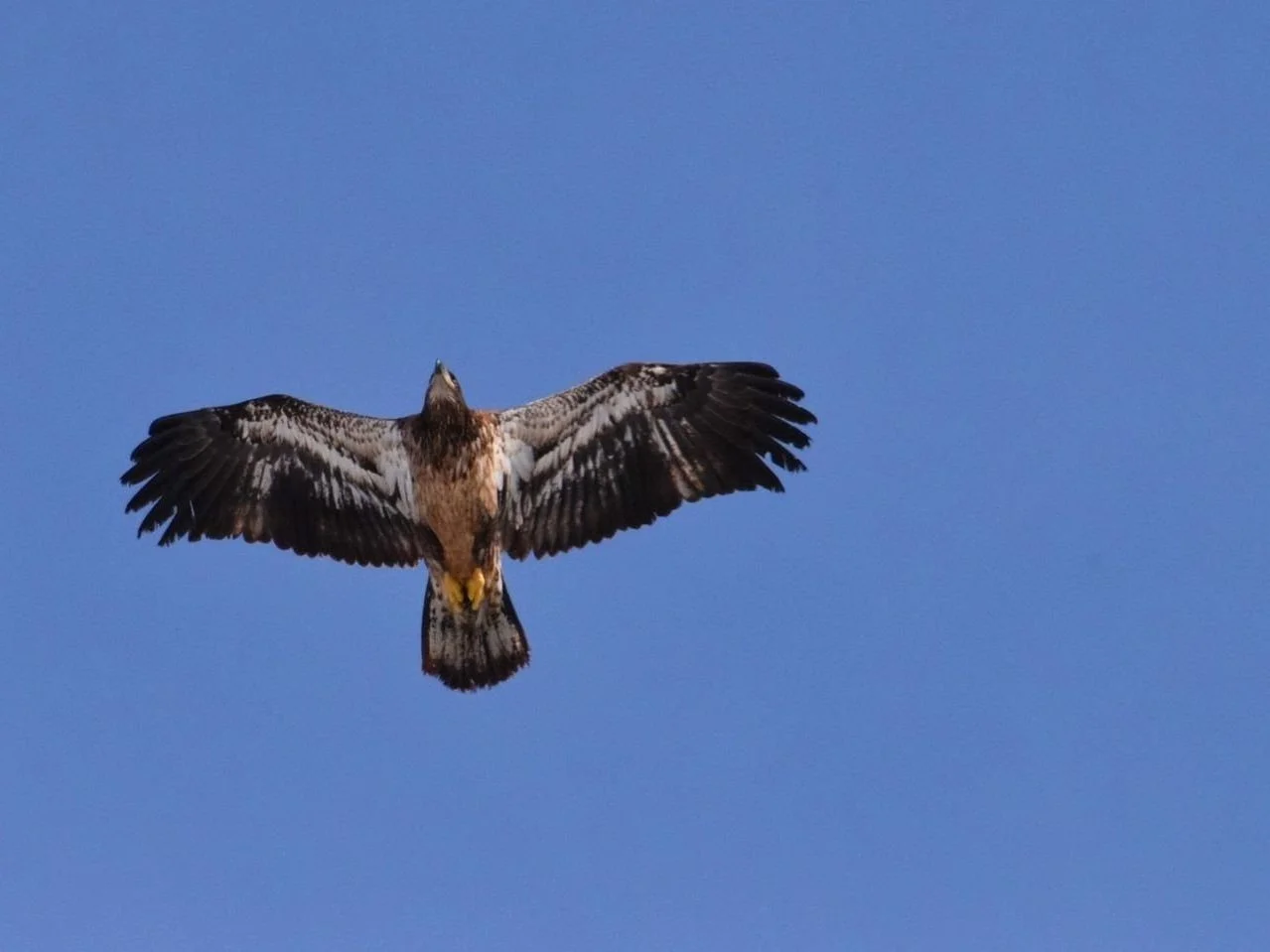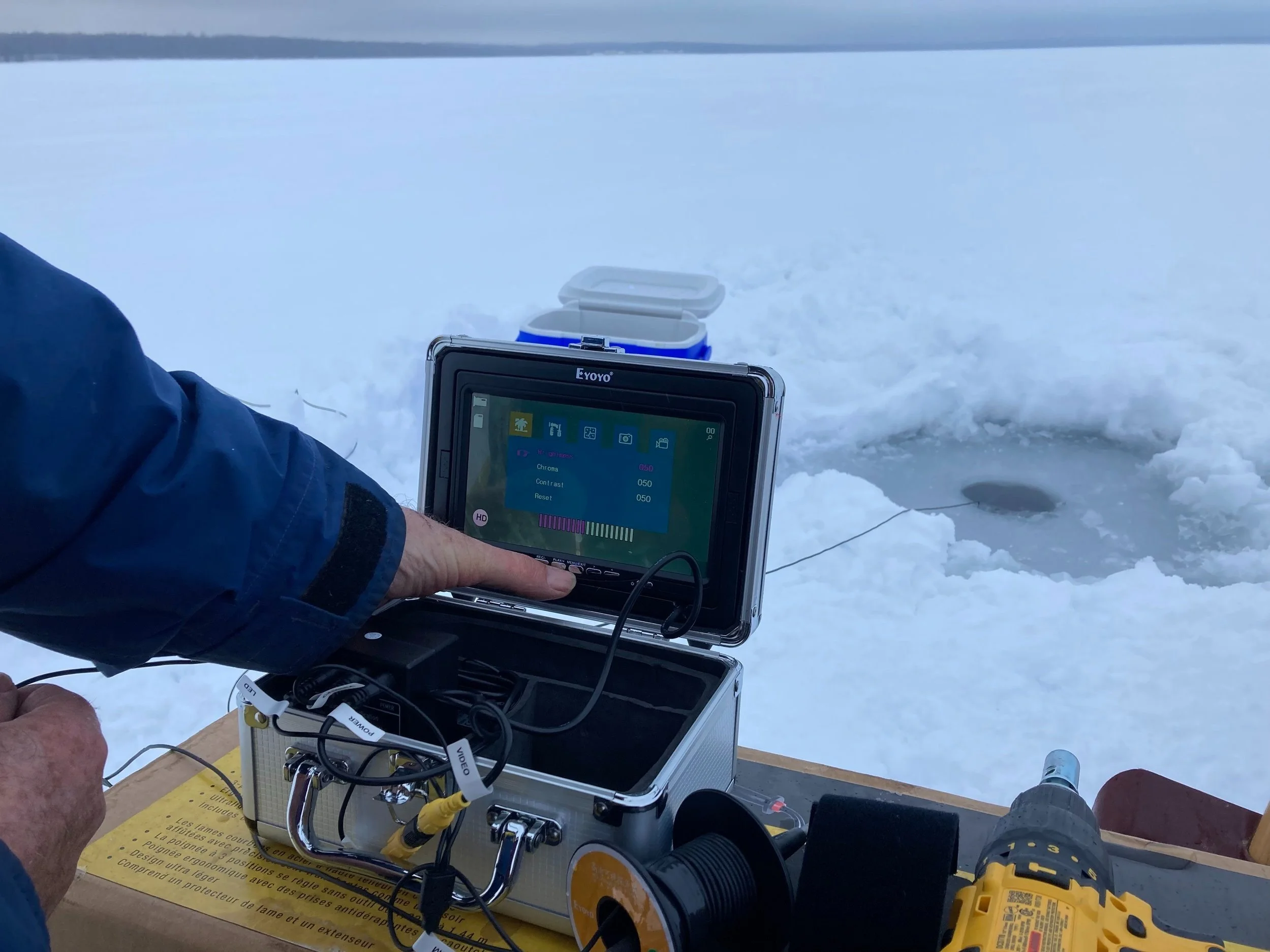LakeObserver
Information for volunteers who are sharing and recording observations about the lake.
Call for community science volunteers!
Volunteers will be monitoring for changes in the shoreline, fish and wildlife, water quality, extreme weather events, and checking for invasive species.
To record your observations
Observations are taken from the shoreline, ideally from your deck or dock. Once you sign up, volunteers will receive training resources and guidance.
Fill out our observation sheet once per month as well as after a significant event (e.g. algal blooms, fish kill, extreme weather events). Year round observations are preferred, however if you can only do the summer please let us know!
Data entry:
LakeObserver information sheet
LakeObserver entry sheet, printable version
LakeObserver entry sheet, online form
If using a paper-based entry sheet please transfer data to the online form or check in with PLWA staff.
Results
2023 so far…
This Spring was hot and dry. Little precipitation and lack of spring melt contributed to a lower water level at Pigeon, and the drastic temperature changes caused ice to push around the lake.
June brought a full week of some much-needed rain which helped raise the water level. Lots of people have commented on the vast amount of perch and minnows compared to previous years
July consisted of hot days and stormy nights. Some algal blooms were spotted around the lake but did not amass anything significant.
Thank you to the volunteers who are helping to collect monthly observations at the lake! As a result of their effort collecting information on lake and shoreline changes, we can better understand Pigeon Lake.
Secchi Dip-In
Information for volunteers who are sharing and recording data about the water clarity.
Call for community science volunteers!
The Secchi Dip-In program involves community scientists measuring water turbidity, gathering data on the water clarity at Pigeon Lake. Our data contributes to the Secchi Dip-In database created by the North American Lake Management Society.
To measure water clarity
If you have access to a boat, consider becoming a citizen scientist for our Secchi Dip-In program. Pick up a Secchi disk from our office, then take your boat out on the lake. Water clarity is measured by lowering the secchi disk into the water until it is no longer visible.
If this program interests you, please join! Once you sign up, volunteers will receive monitoring procedures, supplies, and guidance.
PLWA How to Take a Secchi Depth Video
Data entry:
Secchi Dip-In Volunteer Instruction Sheet
Secchi Dip-In Online Data Entry Form
Scheduled dates:
2024 Secchi Dip-In
This year you’ll have July 19th- 21st to collect and input your Secchi depth. Have fun dipping!
Results
2023 Results so far…
The July 2022 Secchi Dip-In had an average secchi depth of 258 cm from 27 readings.
Thank you to all our Secchi Dip-In volunteers who have helped us collect water clarity data at Pigeon Lake during out Secchi Dip-In event!
CreekWatch
Information for volunteers who are sharing and recording data about the creeks.
Call for community science volunteers!
CreekWatch monitors the creeks in our watershed by having community scientists collect samples from creeks and outfalls around Pigeon Lake. These samples are tested at a lab for water chemistry and pollutants and will help determine nutrient loading and the impact of surrounding land use.
To collect creek samples
Join PLWA staff to take samples from our 9 sample sites once a month during the summer.
Once you sign up, volunteers will receive training resources, supplies, and guidance.
Scheduled sampling dates:
May 27
June 29
July 29
August 17
Results
Comparative Data (2013-2023)
Please keep in mind that CreekWatch is a new program (2022), and will take years of consistent sampling to determine a baseline and observe patterns and changes.
Map of sampling locations can be found here
*note TC#1 is no longer sampled, in lieu Zeiner Creek has been added
2023 Results
This year all samples will be analyzed by Bureau Veritas and Dr. Hanington
2022 Results
5 Sampling events took place in 2022 over March, June, July, August and September.
March freshet and June samples were sent to Bureau Veritas Lab to be analyzed for chemical concentrations adjunct to lake health
View the analysis from Bureau Veritas
Summary of Bureau Veritas Analyses: coming
June, July, August and September samples were sent to Dr. Patrick Hanington’s Lab at the University of Alberta to be analyzed for fecal pollution targets.
Summary of Dr. Hanington’s Findings: In 2022 water samples were taken from 9 creeks and outfalls around Pigeon Lake during 4 sampling events. Those samples were analyzed for 3 fecal pollution targets: Enterococcus - general fecal bacteria indicator, RumBac - ruminant fecal bacteria marker, and HF183 - human fecal bacteria marker.
Every sample possessed detectable enterococcus (general fecal bacteria indicator) which is expected for a natural water body. The generally accepted recreational water guidelines for enterococcus are 1280GE/100ml (genome equivalents/100ml). A single water sample collected in 2022 exceeded 1280GE/100ml. This sample (2243.4 GE/100ml) was collected from site TC-2 (Tide Creek - Range Road 22) in July.
Rumbac (ruminant fecal bacteria marker) was detected in several samples, most often SHC (Sunset Harbour Creek) and TC (Tide Creek). The amount is not quantified, just that the bacteria is present.
Hf183 (human fecal bacteria marker) was omitted from the results as it was not detected in any samples.
Thank you to the Summer Villages of Norris Beach and Poplar Bay for providing financial support to CreekWatch
Mussel Monitoring
Call for community science volunteers!
The mussel monitoring program checks for invasive Zebra and Quagga mussels to control their potential spread into Pigeon Lake. If found in the lake, they would filter water to the point of removing food and nutrients that other native aquatic species rely on, therefore altering the food web. The clearer water would also create prime conditions for algal blooms.
To monitor for invasive mussels
Volunteers monitor for mussels monthly by tying a substrate (PVC pipe filled with concrete) to the end of their dock where mussels can grow and ultimately be detected if they are present.
If you have access to a dock, consider becoming a mussel monitoring volunteer! Once you sign up, you will receive monitoring procedures, a substrate, and guidance.
Data entry:
Results
No invasive mussel species have been observed at Pigeon Lake
2022 Results:
Lake Log Historical Observations
Help Us Create a Living Lake Log!
Lake life has changed significantly since the 1940’s and there is no single log of first-hand accounts to track environmental changes at Pigeon Lake.
PLWA is collecting and digitizing artifacts such as photos, slides, media accounts/articles, video footage, documents, and voice recordings to preserve a record of environmental conditions at the lake from the perspective of those who live, work, and play in the watershed. We would appreciate information dating as far back as possible.
Contribute to the Lake Log
If you are interested in contributing to the Lake Log, please fill out the survey below and we will be in touch.
Email us: pigeonlakelog@gmail.com
eBird
Call for community science volunteers!
eBird has applications in birding data ranging from research and monitoring to species management and habitat protection. It is a tool that allows anyone around the world to store their birding observations, photos, and sound recordings so that they are available for educators, scientists, and birders around the globe.
If you are interested in bird watching, join the eBird community science program! Your sightings will help contribute to conservation decisions and bird research worldwide.
Contribute to eBird
As a volunteer, your task is to enter when, where, and how you went birding, and then fill out a checklist of all the birds seen and heard during the outing through eBird’s free mobile app. The website provides ways to explore and summarize your data and observations from the global eBird community.
iNaturalist
Call for community science volunteers!
Your observations of plants and animals can contribute to biodiversity science! iNaturalist shares the findings made by people from around the world with scientific data repositories to help scientists find and use your data. All you have to do is observe.
Contribute to iNaturalist
Explore and share your observations from the natural world by signing up on the iNaturalist website or by downloading the iNaturalist app. View the Pigeon Lake project to see what’s been seen in the area.
Winter LakeKeepers
Call for community science volunteers!
The Winter LakeKeepers program has volunteers monitor various indicators that improve our understanding of lake ecology and its health in the winter. This program is best for those who ice fish, however anyone is free to participate!
Lakes are to be sampled at least once during the ice-on period, which coincides with Alberta’s ice fishing season (December 1st – March 31st).
Becoming a Winter LakeKeeper
Volunteers can access the instruction guide, field sheets, and extra resources from ALMS Winter LakeKeepers
